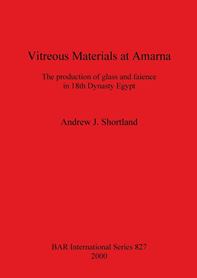| Main » Ad Board » ДРЕВЕН ЕГИПЕТ И АФРИКА » Техника и технологии |
| 13.08.2023, 07:52 | |
Производството на стъкло и фаянс е технология, която достига своя връх през епохата на XVIII династия (1550-1292 г. пр. н.е.) от Новото царство в Древен Египет. Монографията анализира в детайли този процес въз основа на находките в Тел ел Амарна, изоставената столица на фараона еретик Ехнатон (1351-1334 г. пр. н.е.). - на английски език, от MEGA, формат PDF. Сваляне с ляв бутон (downloading by left button) и после през бутона Download.
| |
| Views: 633 | Placed till: 17.09.2023 | Rating: 0.0/0 | |

